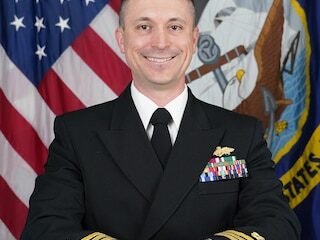Cruise Industry
Game-Changing Tactical Decision Aid Unveiled by NRL, ONR-Global at Modern Day Marine Expo
The innovative LittoralLens system has emerged as a game-changer in the field of naval operations by providing real-time, automated measurements of littoral surface water velocities and wave statistics. This device is poised to significantly enhance battlespace awareness and support tactical decision-making for both manned and unmanned assets within the littoral environment.
B.J. Landry, Ph.D., a principal investigator at the Stennis Space Center’s Ocean Sciences Division, highlighted LittoralLens’s compact design which facilitates onboard analysis on mobile platforms, including lightweight tactical vehicles like the Polaris MRZR. “LittoralLens estimates Surf Observations (SUROB) parameters to offer Modified Surf Index (MSI) values, a mission-critical parameter that delineates the surf zone and acts as a go/no-go threshold for U.S. Marine Corps operations,” explained Landry.
The system ingeniously integrates advanced computer vision, leveraging an NRL-patented feature tracking velocimetry algorithm. This union of hardware and software allows LittoralLens to surpass post-processing limitations often encountered in complex coastal environments, thus enabling full automation. Carlo Zuniga-Zamalloa, Ph.D., the lead algorithm developer and co-inventor of LittoralLens, emphasized the use of custom-developed stereo reconstruction and geo-registration algorithms that automatically estimate surf zone statistics.
LittoralLens has undergone rigorous testing, both in lab settings at the University of Iowa Wave Basin Facility and field testing near Camp Pendleton, California. The team behind LittoralLens comprises five researchers, including Edward Braithwaite, III, Grant Lockridge, Sam Bateman, Carlo Zuniga-Zamalloa, and Landry.
“Ensuring vehicles can efficiently transit from sea to shore is crucial for operational efficiency,” Landry stressed, adding that their lab remains committed to advancing the Navy and Marine Corps’ mission readiness. The system reached significant developmental milestones through two NRL-applied research projects, earning a place in this year’s ONR-Global TechSolutions project titled the Marine Corps Surf Observation Tool for Littoral Expeditionary Operations.
The ONR-Global TechSolutions project includes additional technologies developed in collaboration with researchers at NRL and the U.S. Army Engineering Research and Development Center (ERDC) Field Research Facility. U.S. Marine Corps Chief Warrant Officer 3 Lester emphasized the critical role of the Fleet Marine Forces in informing and aiding these collaborative research efforts.
Jason Payne, Program Director at ONR-Global TechSolutions, highlighted the program’s objective to rapidly develop prototype solutions to tackle challenges identified by sailors and marines. “Our aim is to deliver a prototype within a year, providing a tactical decision support tool for managing littoral expeditionary access,” Payne remarked. This tool, which includes LittoralLens data and other sensor feeds, displays information on Android Tactical Assault Kit (ATAK) handhelds for easy interpretation.
A final concept demonstration of the technology is scheduled for this August at Marine Corps Base Camp Pendleton during the Technical Concept Experiment (TCE 24.2). This event will place the tools directly in the hands of the Marines who initially requested them.
For further inquiries about this innovative technology or to request a solution, reach out to ONR-Global TechSolutions at ONR.techsolutions@navy.mil or visit their official site at www.onr.navy.mil/techsolutions.
About the U.S. Naval Research Laboratory:
The U.S. Naval Research Laboratory (NRL) is dedicated to driving forward scientific and engineering innovations for the U.S. Navy and Marine Corps, from the seas to space and the information domain. Headquartered in Washington, D.C., with major field sites in Stennis Space Center, Mississippi; Key West, Florida; and Monterey, California, NRL employs approximately 3,000 civilian scientists, engineers, and support personnel. For more details, contact NRL Corporate Communications at (202) 480-3746 or nrlpao@us.navy.mil.







